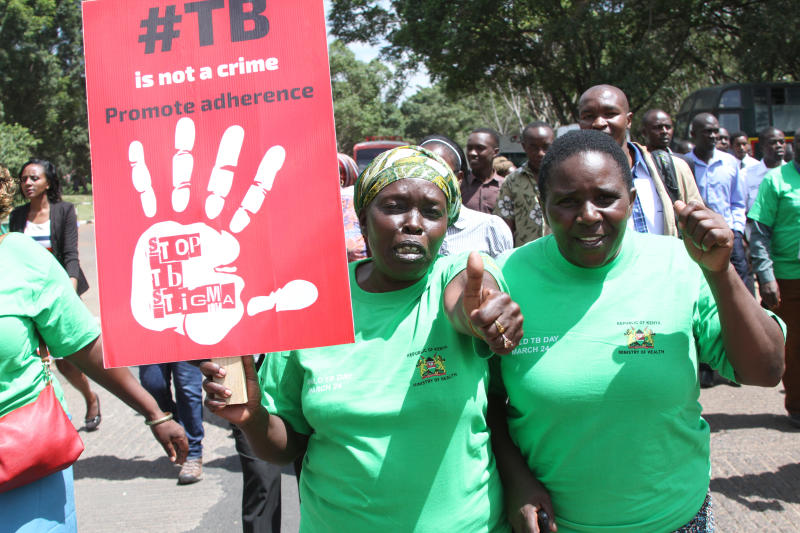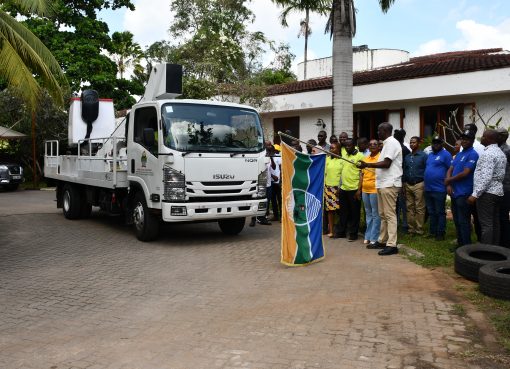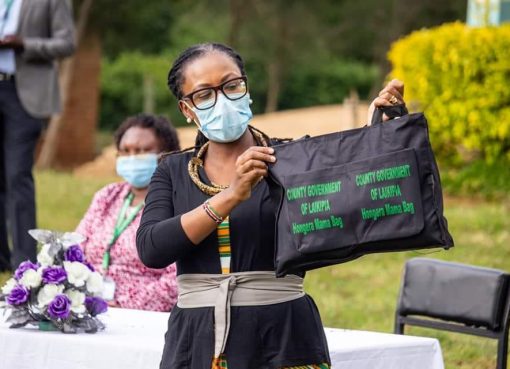A landmark clinical trial has revealed evidence supporting the use of four new and improved regimens able to treat multi-drug resistant tuberculosis also known as rifampicin-resistant tuberculosis (MDR/RR-TB) among children and adults.
Lorenzo Guglielmetti, the Médecins Sans Frontières Director for the endTB project and Co-Principal Investigator of the study said that for far too long, MDR-TB has loomed as a formidable threat with limited, and poorly tolerated treatment options.
“Today, we unveil evidence for multiple innovative all-oral, shortened regimens that will allow patient-centered, individualized treatment of MDR-TB. This marks a pivotal moment in the fight against a disease that has plagued vulnerable populations worldwide,” explained Guglielmetti.
He added that what makes these results even more remarkable is the diversity, and resulting generalizability, of this Phase III randomized controlled trial, Guglielmetti who is also the Co-Principal Investigator of the study made the remarks during the Union World Conference on Lung Health held in Paris, France on Wednesday.
The breakthrough trial discovered three new drug regimens that could deliver similar efficacy and safety to conventional treatments while reducing treatment time by up to two-thirds.
Of great significance, the endTB regimens represent important alternatives for short MDR-TB treatment and complement the use of another highly effective, shorter MDR-TB regimen, called BPaLM, which is not suitable for certain populations.
These new patient-centered treatment regimens would empower clinicians to offer shortened MDR-TB treatment regardless of age, pregnancy, and comorbidities that are common among people with MDR-TB, as recommended by the World Health Organization (WHO).
Additionally, the trial supports the use of a fourth regimen as an alternative for people who cannot tolerate bedaquiline or linezolid; at least one of these two drugs is in every current WHO-recommended regimen for MDR-TB.
In another related study released in September 2023, dubbed; ‘Tuberculosis in the WHO African Region:2023 progress update,’ Kenya was among eight countries that have reached a 35% reduction from 2015 alongside Eswatini, Mozambique, South Sudan, Togo, Uganda, and Zambia.
TB is a serious public health concern in Kenya with about 120,000 people a year developing TB (48,000 of them being HIV-positive) and 18,600 people die from it. As the fourth largest cause of death, TB is responsible for about 6 percent of all deaths.
In 2021, the region passed the 2020 milestone of the End TB Strategy, with a 22 percent reduction in new cases compared with 2015. An estimated 2.5 million people fell ill with TB in the African region in 2021, and around 500,000 people died of the disease in the same year.
The WHO report further notes that the gap between the estimated number of TB cases and the number of notified cases remains large, with gaps in recording the actual number of drug-resistant TB cases even larger.
A more worrying challenge is the identification of TB cases among children. Increased measures are required to improve detection, bacterial confirmation, and treatment of paediatric TB, reflected in the 322,000 children and young adolescents (aged 0-15 years) making up one-third of cases among children under 15 worldwide.
MDR/RR-TB is a disease caused by a TB bacterium that is resistant to rifampicin, one of the most powerful first-line antibiotics, with a plus/minus resistance to isoniazid.
According to the endTB report, about half a million people fall sick with MDR/RR-TB each year leading to death. Despite the existence of a wide range of MDR-TB regimens used worldwide, many people are still treated with conventional treatments which last up to 24 months, are ineffective (only 59% treatment success in 2018), and often cause terrible side effects, including acute psychosis and permanent deafness.
During the full course of treatment, patients on these regimens must ingest up to 14,000 pills while some have to endure months of painful and daily injections. The Phase III randomized controlled trial began in 2017 following the formation of an end TB consortium led by Médecins Sans Frontières (MSF), Partners in Health (PIH), and Interactive Research and Development (IRD) and funded by Unitaid.
The endTB project enrolled a diverse group of 754 patients from seven countries (Georgia, India, Kazakhstan, Lesotho, Pakistan, Peru, and South Africa). It included historically excluded populations like adolescents and those with comorbidities like substance-use disorders and retained participants who became pregnant during the trial.
The trial evaluated five nine-month treatment regimens, and randomization was outcome-adapted, meaning more patients were assigned to regimens that produced better outcomes.
“We stand on the cusp of a significant breakthrough in the battle against MDR, a disease that disproportionately affects impoverished populations around the globe,” said Prof. Carole Mitnick, ScD, Partners in Health Director of Research for the endTB project, Co-Principal Investigator of the study, and Professor of Global Health and Social Medicine at Harvard Medical School.
Prof. Mitnick explained that the results offer hope to those in dire need and underscore the urgency of continued research and innovation and accountability of private companies that receive public funds to address diseases that too often strike the most vulnerable among us.
However, the don pointed out the cost of some drugs that remains a barrier. One example is delamanid which is still priced at 12-40 times higher than it should be according to an independently estimated cost to produce the drug.
The endTB clinical trial evaluated five experimental regimens for MDR/RR-TB against the standard of care in two distinct analysis populations. EndTB regimens 1, 2, and 3, demonstrated non-inferiority to the control in both primary analysis populations, establishing their success in treating RR-TB.
Notably, regimens 1, 2, and 3 achieved favorable outcomes in 89.0%, 90.4%, and 85.2% of participants, respectively. Regimen 5 registered a strong treatment response at 85.6% and was non-inferior to the control & #39; s 80.7% in one of the primary analysis populations.
Consequently, while consistent results in both populations are needed to formally establish non-inferiority, regimen 5 holds promise as an alternative for patients unable to receive other recommended treatments.
Pointedly, true access to these new treatment options depends on removing all barriers to timely and high-quality care. These trial results could address a major barrier to care for many people and the endTB consortium will continue to advocate to improve access and affordability to quality TB care.
“These results provide new hope for all those awaiting treatment for the most dangerous and difficult-to-treat forms of tuberculosis worldwide. We have the gold-standard research. The drugs are already available where they are needed. If recommended, this high-quality evidence could quickly translate into better treatment options suitable for all people with drug-resistant tuberculosis.” affirmed Dr. Philippe Duneton, Executive Director of Unitaid.
By Joseph Ouma and Rolex Omondi





